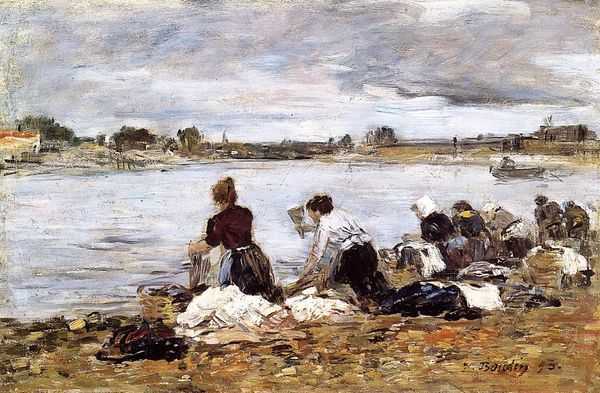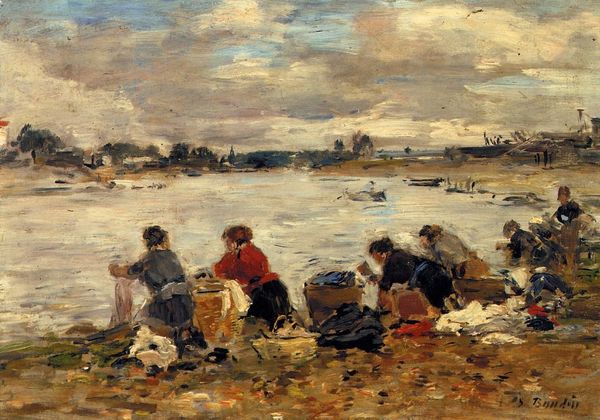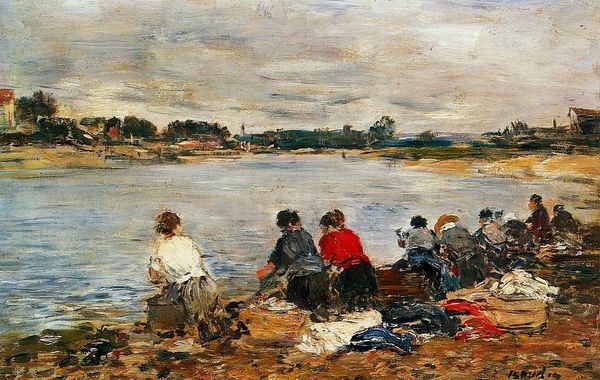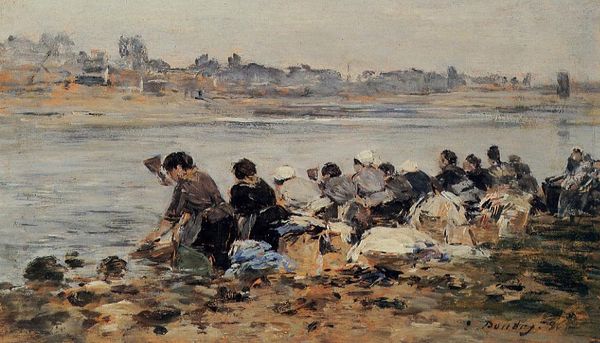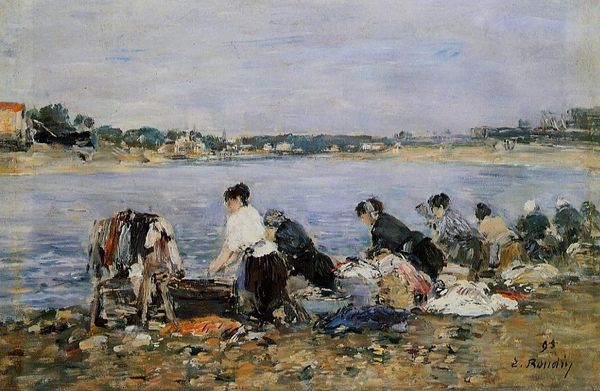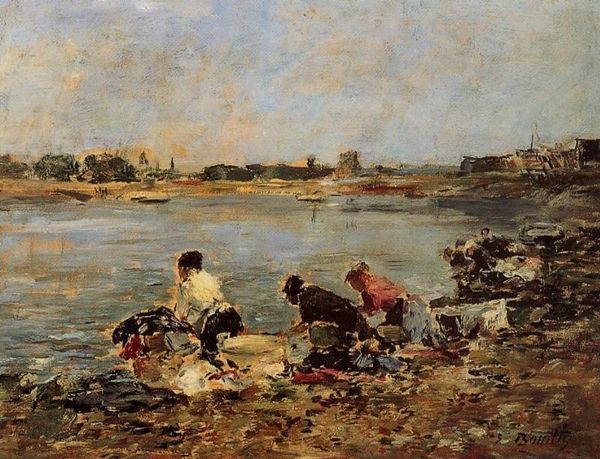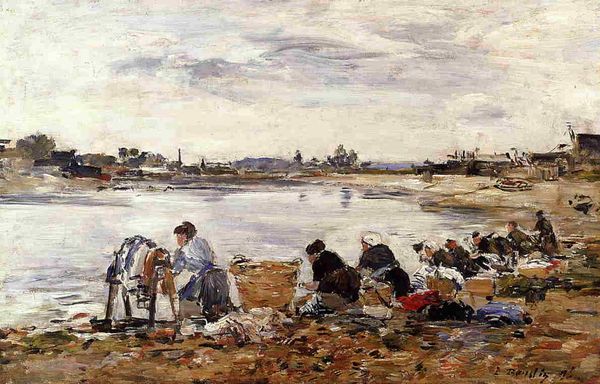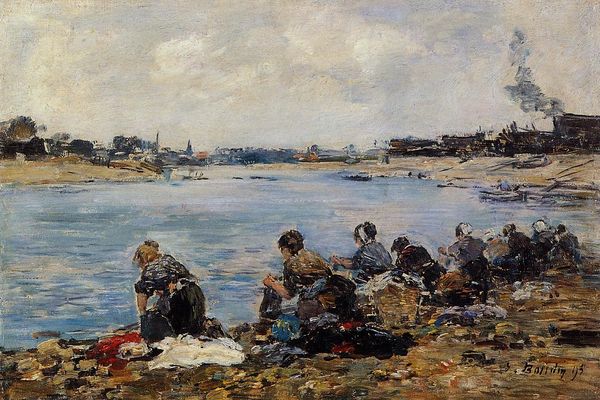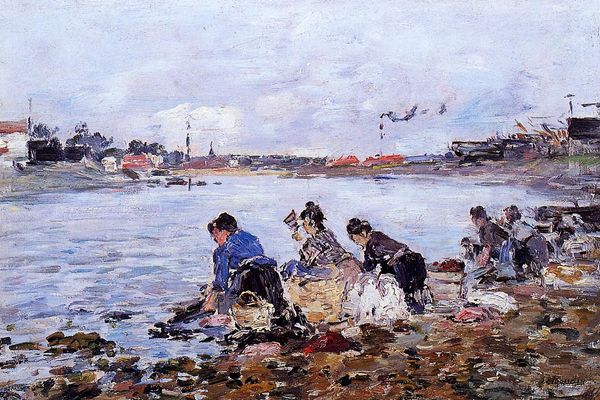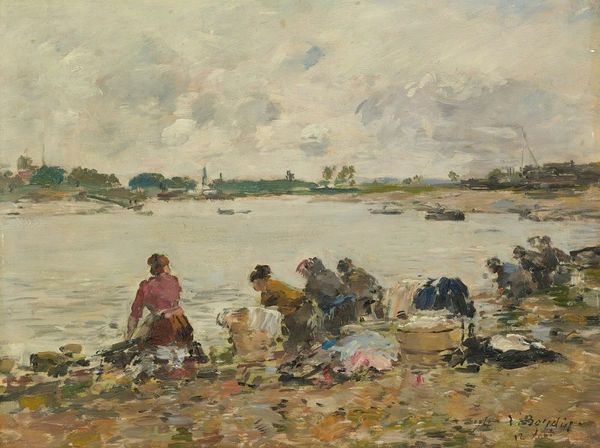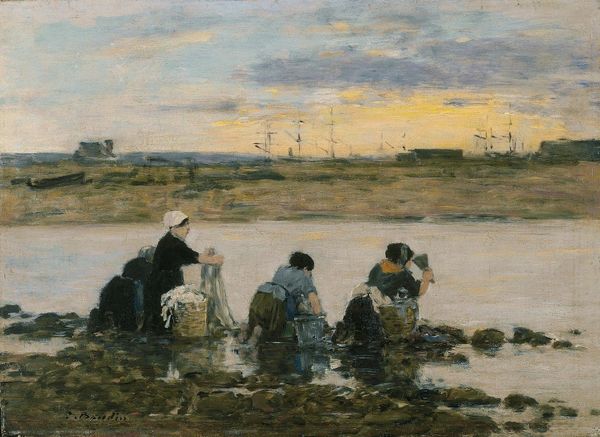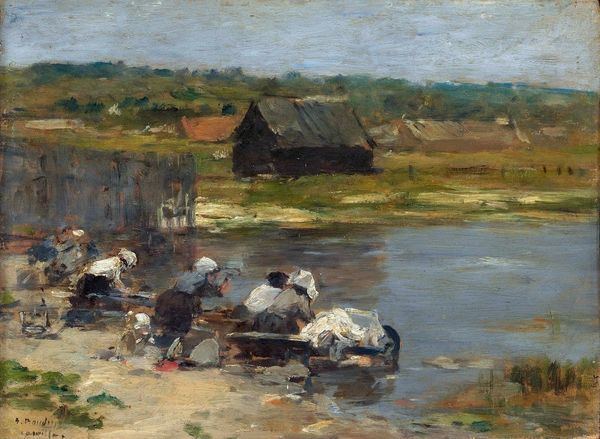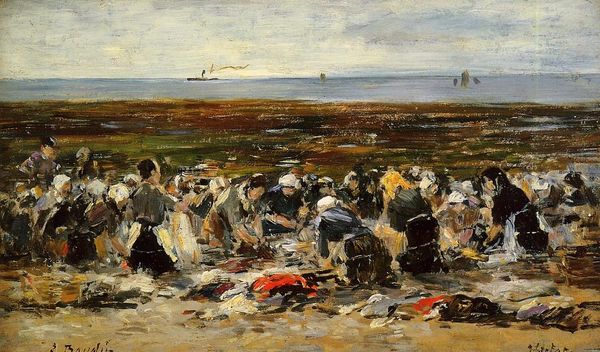
Copyright: Public domain
Editor: So, this is Eugène Boudin’s "Laundresses on the Banks of the Touques," painted in 1895. It’s an oil painting, and you can really see the plein-air technique. The women are rendered almost as blobs of color, bent to the task. It feels… unsentimental. What do you make of it? Curator: It’s fascinating how Boudin directs our attention to the labor involved. Look at the materiality of the paint itself, thick and visible. He’s not just depicting a scene; he’s showcasing the *act* of painting and, by extension, the act of labor being performed by these women. The materiality of the painting mirrors the materiality of their work. Editor: So you’re saying the rough texture of the paint is meant to echo the rough nature of their job? The way the oil paint almost stands in for the harsh soap, the coarse fabrics? Curator: Precisely. And consider the social context: these women aren’t idealized figures, they’re working class. Boudin isn't focusing on grand narratives, but rather the everyday, the mundane labor that sustains society. Notice the repetitive motion implied in their postures, which speaks to the continuous, often invisible work of maintaining domestic life. Editor: It's like he’s collapsing the space between "high art" and the ordinary chores done by these women, isn’t it? Almost questioning what we value as a culture. Curator: Exactly! He is elevating the significance of work often ignored, challenging the traditional art market’s focus on the wealthy and powerful. In that way, it is rather a powerful image, indeed. Editor: That’s really shifted my perspective. I was so focused on the Impressionistic style, I almost missed the commentary on social class and the value of labor embedded within the materiality. Curator: Often the magic is in the making and how the art mirrors it! It changes how one thinks about what to admire.
Comments
No comments
Be the first to comment and join the conversation on the ultimate creative platform.
